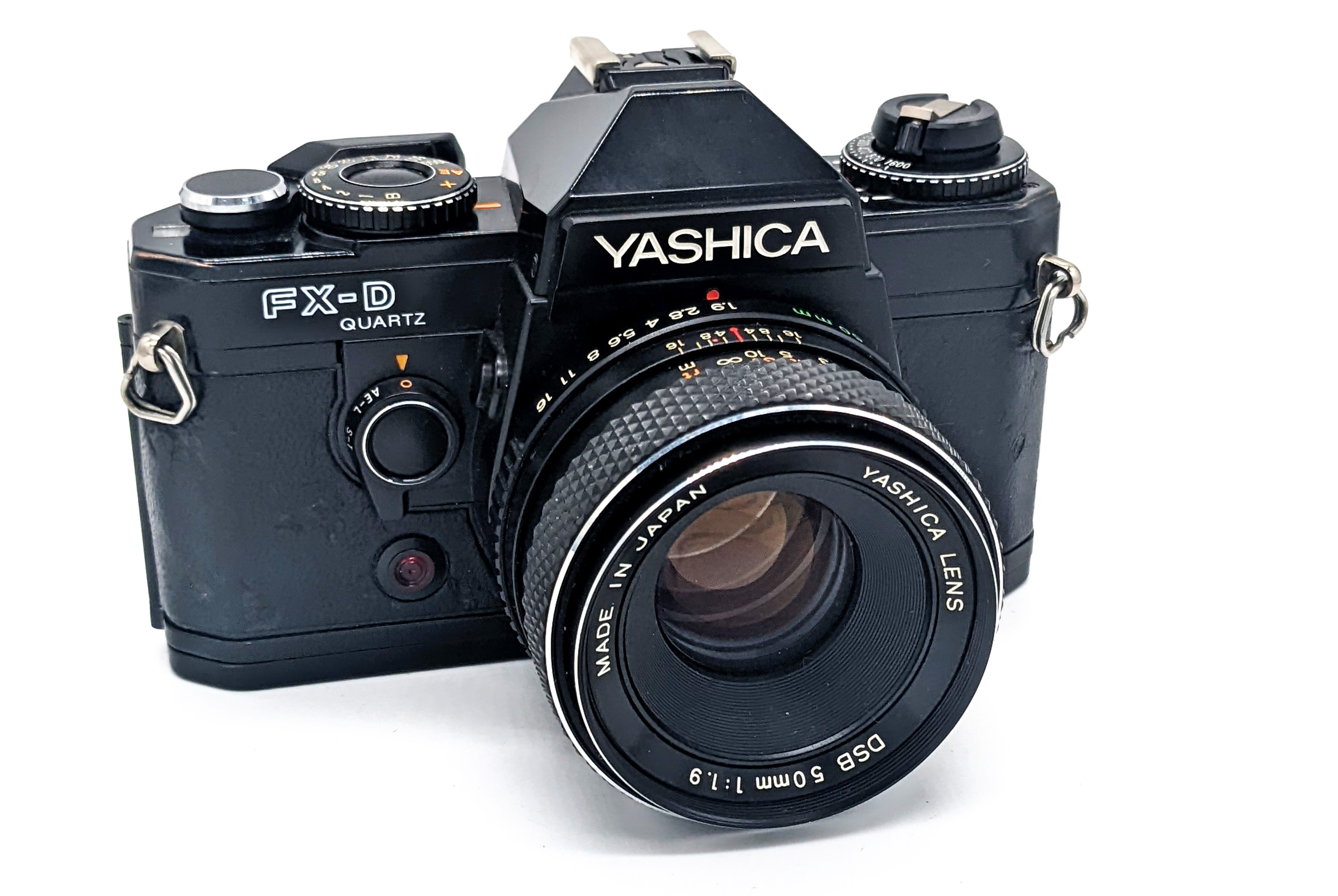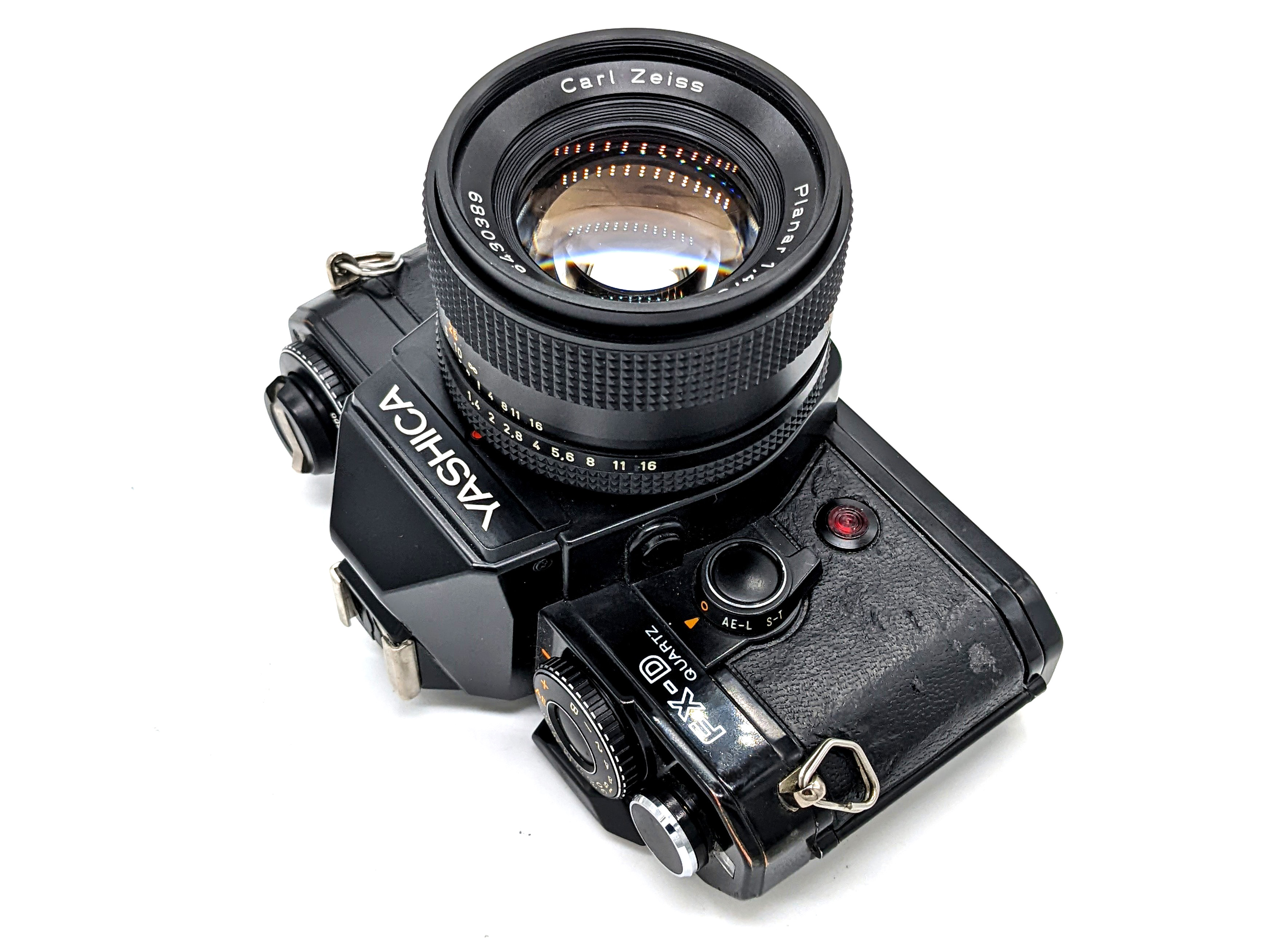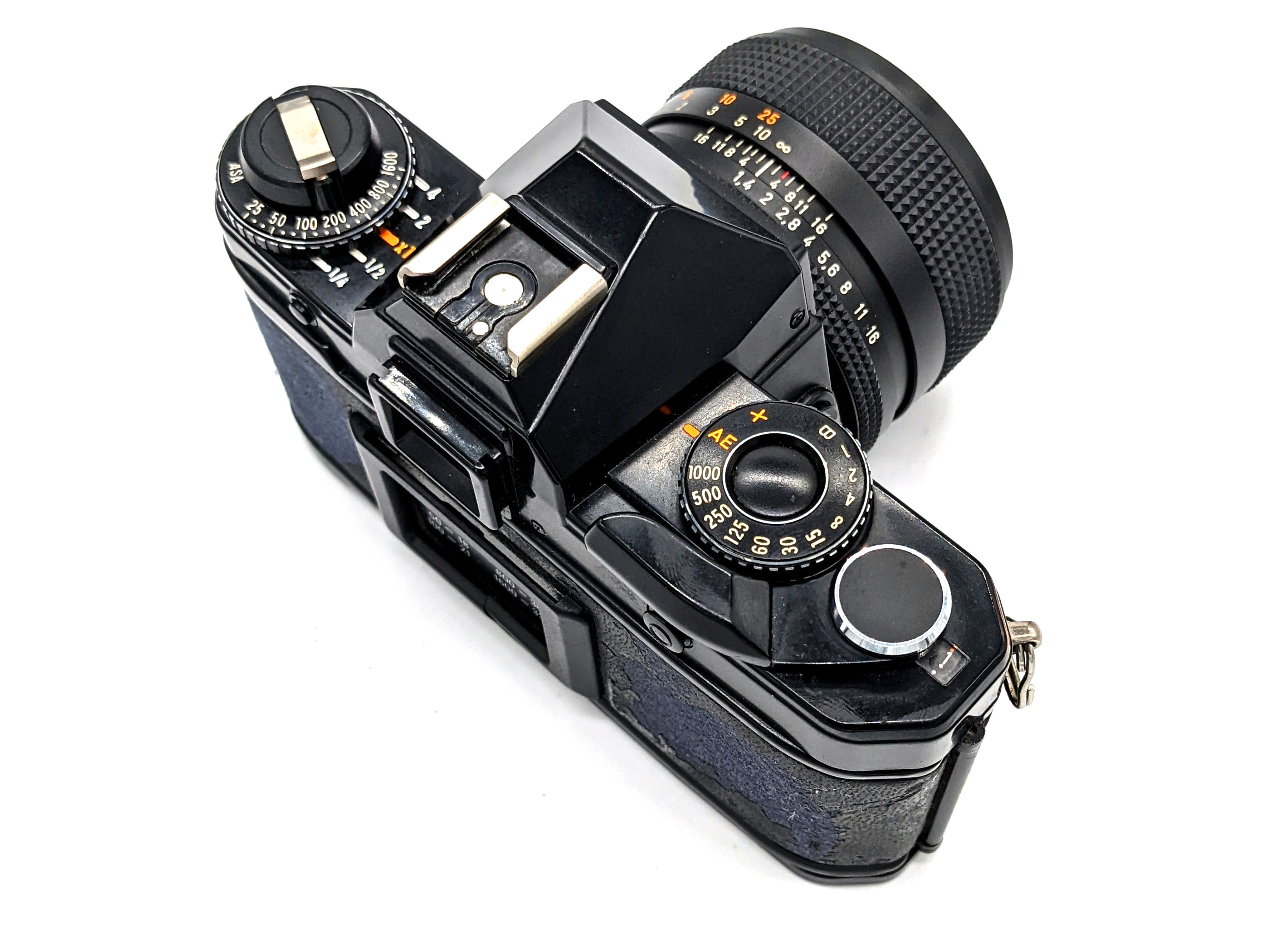
For 1979-80, the Zeiss-Yashica partnership introduced three new advanced-amateur 35mm film cameras for its C/Y lens mount: the Contax 139 Quartz, the Contax 137 MD, and the Yashica FX-D. The 139 was a completely new product, representing Contax’s attempt to slot a camera under its 1975 flagship, the RTS. The hefty 137 MD was also a new design, being one of the first 35mm SLR cameras with an integrated motor drive (the 1979 Konica FS-1 was the first).
Although not built on the same chassis, the FX-D is properly considered as a “de-featured” version of the 139, but not by much. During early 1981, typical advertised pricing for the three models with a standard lens was about $400 for the 137, $350 for the 139, and $250 for the FX-D. The FX-D was a commercial success during its 1981-85 run and certainly competitive with all contemporary advanced amateur models offered by the major manufacturers. The FX-D was ultimately replaced in 1985 by the FX-103, a camera built on the same frame but having a noticeably brighter viewfinder, the addition of program-mode operation, and the capability for TTL flash.
Today, FX-Ds are plentiful, cheap, and easy to find on the used market. While it is certainly no substitute for a Contax-branded product, the FX-D does offer pretty much all of the essential features that a good manual focus 35mm camera should have, and its reliability seems to have held up fairly well during the past 40 years. Let’s take a look.

Specifications
Here are the three contemporary Contax-Yashica products compared.
| Contax 139Q | Yashica FX-D | Contax 137 MD | |
| Viewfinder Coverage | 95% / 0.86x | 95% / 0.86x | 95% / 0.86x |
| Focusing Screen | Split / Microprism | Split / Microprism | Split / Microprism |
| Shutter Speeds | 11 sec. – 1/1000 | 1 sec -1/1000 | 11 sec – 1/1000 |
| Autoexposure Modes | Aperture | Aperture | Aperture |
| Exposure Lock? | Yes | Yes | Yes |
| Metering | TTL Center-Weighted | TTL Center-Weighted | TTL Center-Weighted |
| Viewfinder Info | Aperture; Shutter Speed | Shutter Speed | Aperture; Shutter Speed |
| Shutter | Metal Vertical | Metal Vertical | Horizontal Cloth |
| X-Sync | 1/100 | 1/100 | 1/60 |
| TTL Flash? | Yes | No | Yes |
| ASA Range | 12-3200 | 25-1600 | 12-3200 |
| Batteries | 2 x SR44 | 2 x SR44 | 4 x AA |
| Battery Check | Yes | Yes | Yes |
| Winder? | External | External | Integrated |
| Exposure Comp. | +/- 2 EV | +/- 2 EV | +/- 2 EV |
| Weight | 500g | 460g | 600g |
| Standard Lens | Contax AE 50mm f/1.7 | Yashica 50mm f/2 ML | Contax AE 50mm f/1.7 |

Operation
Viewfinder: The FX-D has the standard split-screen / microprism collar focusing screen with a good 95% coverage and an average 0.86x magnification. It displays only the shutter speed information in the viewfinder via a LED light scale on the right side of the viewfinder (whereas the 139 and 137 also display the selected aperture just outside the frame). The brightness of the FX-D’s viewfinder is about average for its class of camera and era and is probably its weakest attribute. The viewfinders of the 139, 137, and FX-103 are significantly brighter than the FX-D.
Exposure Modes: The FX-D has slightly different method for metering and taking photos from the Nikons and Canons of the era. The main light meter switch is not the shutter button, but the button on the front of the camera. If the shutter is not cocked, both the shutter button and the front button will provide a metering of the scene. However, if the shutter is cocked, only the front button can provide a pre-exposure meter reading. If the shutter is cocked and you decide not to push the front button, pressing the shutter button will trigger an instantaneous reading and then take the photos. The shutter is not especially loud but lacks good dampening.
The FX-D’s metered manual mode is straightforward. The LED viewfinder will blink the correct shutter speed for the given aperture value if the selected shutter speed is incorrect.
Exposure Lock: Both the 139 and FX-D introduced a front switch that would lock the metered exposure for as long as the lever remained in that position. This switch is also used for the FX-D’s self-timer. This type of switch was also incorporated into the later 1982 RTS II.
Flash: Unlike the 139 and 137, the FX-D does not have TTL flash capability. A 1/100 flash sync is par for the course for the era and the class of camera.
Camera Covering: The FX-Ds used a vinyl-type body covering which has not stood the test of time. Nearly all have degraded pretty badly. Replacement coverings exist.
Accessories
FX Winder: The FX Winder is a standard bottom-fitting unit that could advance the film up to 2 frames per second. The Winder is loud and obviously cannot rewind the film. It does have a nice built-in handle that helps grip the set-up. The FX-D could also use the winder designed for the 139.
CS-201 Flash: While the FX-D does not have TTL flash capability, the CS-201 auto flash could set the camera automatically to its flash sync speed while the exposure is in “auto” mode.
Eyecup: While the original round rubber Contax/Yashica eyecups are difficult to find today, the cheap square rubber eyecups for the Canon EOS 100D – 1100D fit just fine.
Conclusions
The relatively compact and lightweight FX-D has pretty much all of the essential features anyone would want in a manual-focus 35mm SLR. Its main characteristics include viewfinder of so-so brightness, exposure lock capability, relatively reliable electronics, and the capability for a motor drive. Compared with its 1981 competition in the advanced amateur SLR market, the FX-D was right up there with the best. Today, FX-Ds are extremely cheap on the used market, with many sellers basically giving them away. The FX-103 is another camera to consider as it adds a better viewfinder, program modes, and TTL flash at the expense of dropping the exposure lock feature. Otherwise, all Contax bodies from the 139 onwards significantly outclass the FX-D.
It is a great shame that cameras which were hailed as advancements in technology have gone , merged or discontinued.Japanese manufactuerers such as Minolta Yashica Mamiya Konica and Topcon which was rated better than Nikon in those years .
Now all digital and not made in Japan , marketing now with Sony Canon Fujica with Nikon who now lead the sales
One reads that film is making a comeback in a small representation of the market and still own Konica Canon Mamiya and Minolta just classics plus German ones.